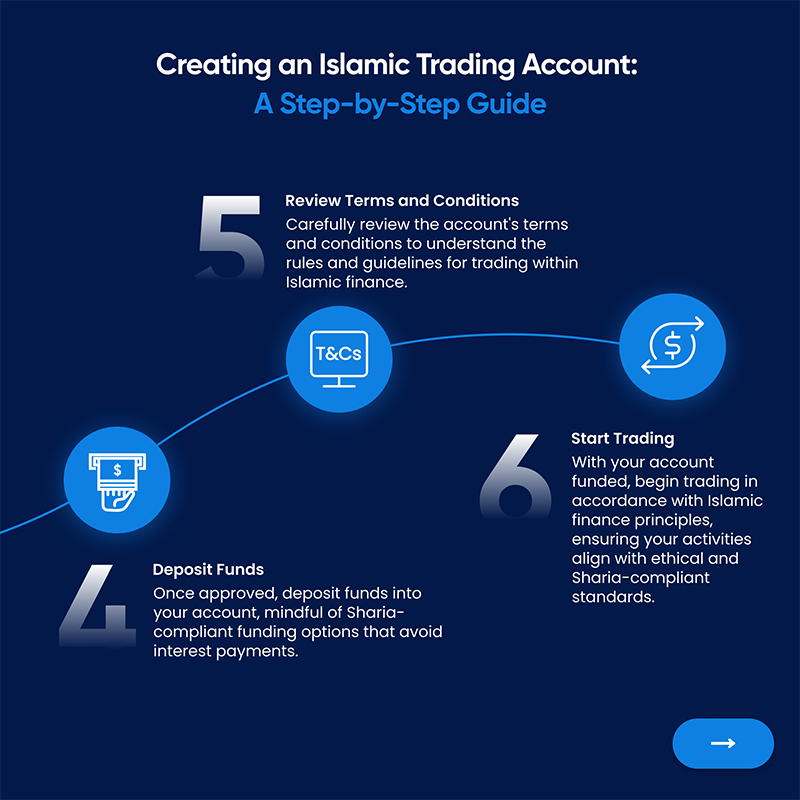
Understanding Ayatollah Sistani’s Forex Ruling: Detailed Guidelines for Muslim Forex Traders
Key Takeaways
- Ayatollah Sistani provides a framework for halal forex trading while avoiding interest and excessive uncertainty.
- His rulings enhance the ethical foundation for Muslim traders in the forex market.
- Understanding Sistani’s guidelines is crucial for maintaining religious compliance while participating in forex.
- Moreover, the discourse around Sistani’s rulings showcases diverse perspectives in Islamic finance.
Table of contents
- The Esteemed Figure – Ayatollah Sistani
- The Intricacies of Forex Trading in Islamic Finance Context
- Synthesizing Sistani’s Stance on Forex – Forex Ruling Overview
- The Lay of the Land – Sistani’s Fatwa on Forex Trading
- Drawing the Line – Sistani’s Stance on the Acceptability of Forex Trading
- Unveiling Sistani’s Islamic Finance Approach – Its Key Principles
- Sistani’s Checklist – Conditions for Halal Forex Trading
- Tackling Risk and Speculation – Sistani’s Views within the Forex Context
- The Ripple Effects – Impact of Sistani’s Forex Ruling on Muslim Traders
- Balancing Act – Support and Criticism of Sistani’s Forex Ruling
- Conclusion – Interpreting the Sistani Forex Ruling
- Additional Study Recommendations
Forex trading, a practice of trading currencies to cash in on varying exchange rates, is rapidly expanding amongst Muslim traders keen on infiltrating the profitable forex market. However, the central crossroad between trading techniques and Islamic finance protocols is paramount, considering the emphasis on ethical transactions under Islamic finance principles that ban particular dealings, like those involving interest. For more background information on this topic, you can check out our previous post: Unraveling Forex Trading Complexities.
One key influencer for numerous Muslim traders is Grand Ayatollah Ali al-Sistani, a highly revered religious figure in Shia Islam. His legal rulings, particularly the sistani forex ruling, have significant bearing on Muslim traders as it provides both religious and ethical direction. In this blog post, we will explore the profundity of Ayatollah Sistani’s forex ruling, its implications for Muslim forex traders, and how it shapes trading practices entrenched in religious belief.
1. The Esteemed Figure – Ayatollah Sistani
1.1 Ayatollah Sistani: An Unfolding Biography and Influence
Born in 1930 in Mashhad, Iran, Ayatollah Ali al-Sistani engaged in extensive religious studies under prominent scholars in the seminaries of Qom, Iran, and Najaf, Iraq. His unmatched scholarly contributions and unwavering command over Islamic jurisprudence single him out as an influential voice in evaluating modern financial practices’ permissibility via the lens of Islamic finance.
1.2 Delving into Sistani’s Influence over Islamic Jurisprudence and Finance
Ayatollah Sistani is a recognized authority in Islamic jurisprudence and finance, guiding Shia Muslims worldwide. His profound understanding of Islamic finance principles and their interpretation greatly influences how modern trading practices are balanced against Islamic law ethics. For more understanding on Sistani’s influence, you can check out our post: Enhancing Islamic Forex Trading.
2. The Intricacies of Forex Trading in Islamic Finance Context
2.1 Breaking Down Forex Trading
Forex trading involves buying and selling different currencies and exploiting their changing exchange rates. Forex trading in the Islamic context is heavily influenced by certain prohibitory factors based on Islamic finance rules that govern Muslim trader activities.
2.2 Unraveling the Dominant Principles of Islamic Finance in Trading
Several key principles underpin Islamic finance and influence the permissibility and ethical foundation of forex trading activities. They include the prohibition of interest (Riba), avoiding excessive uncertainty (Gharar), the necessity for tangible asset-backed transactions, and ethical integrity in all deals. You can read more about forex trading principles in Islamic context in our post: Pamm Mam Halal Islam: A Comprehensive Guide.
3. Synthesizing Sistani’s Stance on Forex – Forex Ruling Overview
3.1 The Background and Canonical Context
Ayatollah Sistani’s ruling on forex trading is essential in integrating Islamic legal and ethical standards with contemporary financial practices like forex trading. The resulting guideline helps traders align their trading habits with Islamic teachings without violating established norms. For more information about Sistani’s perspective on Forex trading, you can check out our previous blog: Pamm Mam Halal Islam.
3.2 Viewing Sistani’s General Position on Forex Trading
Ayatollah Sistani adopts a conservative approach to forex trading, emphasizing ethical and compliant practices with Islamic values and avoiding any potential interest (riba) and excessive uncertainty (gharar).
4. The Lay of the Land – Sistani’s Fatwa on Forex Trading
4.1 Decoding the Sistani Fatwa on Forex
This fatwa delves into issues like the prohibition of interest, avoidance of excessive uncertainty, and the need for immediate execution of transactions. Sistani asserts that forex trading should meet Islamic legal standards and prioritize ethical integrity. You can read more about his Fatwa in our previous intake: Understanding the Gelatin Fatwa: A Comprehensive Pamm Mam Halal Islam Guide.
4.2 Unpacking the Specified Conditions and Guidelines
Ayatollah Sistani’s rulings also specify conditions under which forex trading can be permissible under Islamic law. These rules prevent the implementation of interest-based tactics and ensure immediate execution of transactions without potential deceit.
5. Drawing the Line – Sistani’s Stance on the Acceptability of Forex Trading
5.1 The Clear Demarcation Between Halal and Haram Forex Practices
Ayatollah Sistani has drawn clear lines on the halal (permissible) and haram (prohibited) aspects of forex trading, detailing the practices that can be considered ethical or illicit according to Islamic law. You can get a deeper understanding of line between halal and haram forex practices here: Haram Forex Practices: A Comprehensive Guide.
5.2 Comparisons With Other Islamic Thought Leaders
Discrepancies arise when comparing Ayatollah Sistani’s positions with those of other sects and scholars within Islam, providing an opportunity for robust and mindful dialogues within the Muslim trading community.
6. Unveiling Sistani’s Islamic Finance Approach – Its Key Principles
6.1 Laying out the Core Principles
Sistani’s approach to Islamic finance operations is grounded in a few key principles that intend to avoid harmful or unethical practices.
6.2 Exploration of Sistani’s Forex Ruling Through His Core Principles
Ayatollah Sistani navigates the forex ruling discussions committed to Islamic finance’s vital values. His decisions showcase his commitment to maintaining Muslim traders’ spiritual and ethical wellbeing over potential financial benefits.
7. Sistani’s Checklist – Conditions for Halal Forex Trading
7.1 The Pre-requisites for Halal Trading According to Sistani
Ayatollah Sistani specifies several conditions that forex trading must meet for it to be considered halal, or permissible, under Islamic law.
7.2 Making Practical Sense of Sistani’s Conditions – Implications for Traders
These stipulations have real-world implications for traders, and following them can help maintain religious integrity while engaging in ethical forex trading.
8. Tackling Risk and Speculation – Sistani’s Views within the Forex Context
8.1 Mapping Acceptable Risks and Forbidden Speculative Activities
Ayatollah Sistani makes a compelling distinction between acceptable market risks tied to real assets and speculative activities that blur into gambling or involve excessive uncertainty.
8.2 Application of Sistani’s Risk Views to Forex Trading
Ayatollah Sistani’s ruling has pivotal implications for forex trading in line with these definitions, especially concerning high-risk derivatives and futures.
9. The Ripple Effects – Impact of Sistani’s Forex Ruling on Muslim Traders
9.1 The Consequences on Trading Practices
Sistani’s forex rulings enforce stringent restrictions on traders, calling for adaptation, caution, and adherence to ethical practices. You can read more about his rulings and their consequences in our previous blog: Pamm Mam Halal Islam: Your Comprehensive Guide.
9.2 Stories from the Ground – Examples of Traders Adapting to the Rules
Real-world examples of traders adapting to Ayatollah Sistani’s rulings offer insightful perspectives into their practical application and the challenges they pose.
10. Balancing Act – Support and Criticism of Sistani’s Forex Ruling
10.1 Amplifying the Support for Sistani’s Stance
The conservative interpretation adhered to by Sistani is appreciated by those valuing the preservation of traditional Islamic values in the face of a rapidly changing financial landscape.
10.2 Unraveling the Critiques of Sistani’s Standpoints
Some critics argue that Sistani’s guideline may be highly restrictive, limiting Muslim participation in dynamic global markets.
10.3 Striking a Balance amidst Diverse Perspectives
Through vibrant discussions in the community, Muslim traders can inculcate an informed, balanced approach, aligning financial practices with religious teachings.
Conclusion – Interpreting the Sistani Forex Ruling
Ayatollah Sistani’s rulings on forex trading serve as a guiding compass for traders seeking balanced, ethical practices that align with Islamic teachings. As the world of forex deepens, the need to understand these principles and seek reliable Islamic scholars’ guidance becomes increasingly crucial.
Additional Study Recommendations
To probe deeper, traders are urged to dwell into more scholarly articles exploring the ties between Islamic finance and forex trading, particularly those penned by Ayatollah Sistani and expand their understanding of terminologies like riba, gharar, Maysir, and Marjaʿ al-Taqlīd. In addition, here is a supplementary blog that could guide you through the process: Understanding Riba in Forex Trading: Navigating Leverage.
